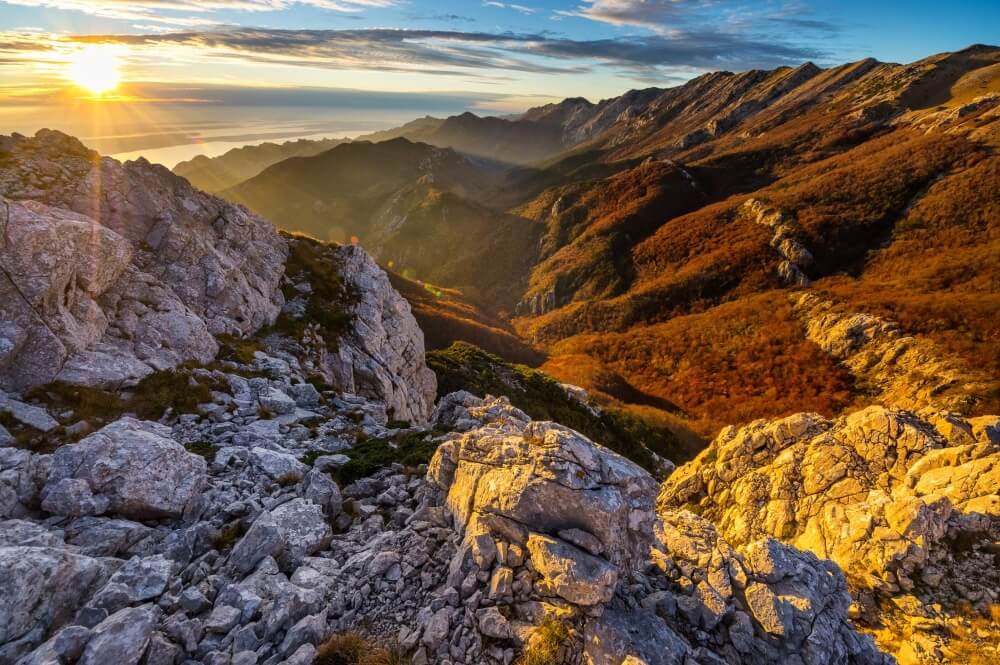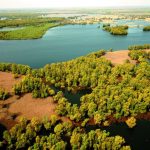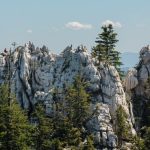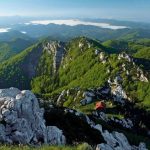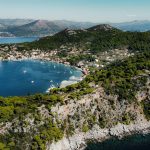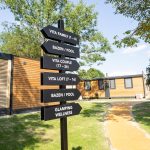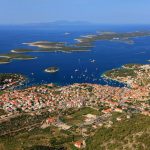A voyage of discovery through the wild terrain of Paklenica National Park. Your reward? Breathtaking scenery and epic views, where mountains, canyons, and the coast collide.
- Welcome to Paklenica National Park, Starigrad, Zadar County, Croatia!
- The Canyons of Paklenica
- Hiking Routes: The Trails of Paklenica
- Paklenica National Park Climbing
- Flora and Fauna
- Manita peć cave
- Where to stay in Paklenica National Park?
- Paklenica National Park Entrance, Tickets/Fees and Opening Hours
- Paklenica Weather
- How to get to Paklenica National Park and get around
- Planning for a Safe Visit to Paklenica National Park
Welcome to Paklenica National Park, Starigrad, Zadar County, Croatia!
Some of Croatia’s beautiful National Parks and Nature Parks have been tamed. Indeed, some are so accessible, you can sit back and relax – on a boat, on a train – watching the view pass by. By comparison, Paklenica National Park demands more respect. This is a walk into the wild.
Indeed, so wild is Paklenica National Park that its experience can only truly be unlocked on foot. Containing two of Velebit’s highest peaks, Vaganski vrh (1,757 meters) and Sveto brdo (1,753 meters), the walking is sometimes not unchallenging. But, that challenge is exactly why many come.
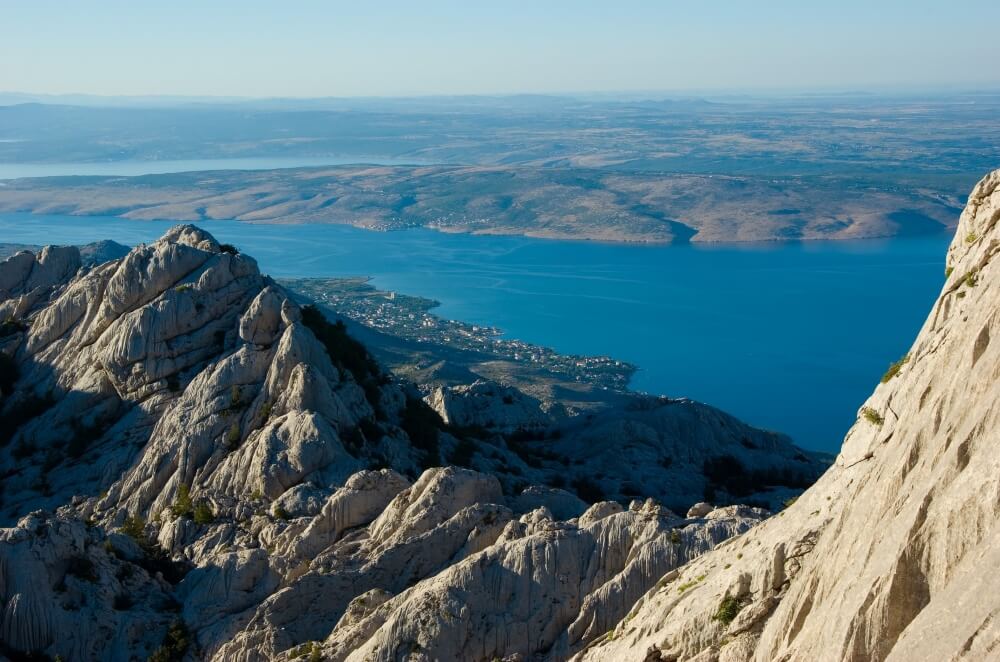
One of the most popular hiking sites in Croatia, Paklenica is also one of the most famous climbing locations in southeastern Europe. Sheer karst cliffs invite international visitors, rewarding them with views across a landscape unrepeated in Croatia.
Certainly, Paklenica is not the only mountain range in Croatia protected as a National or Nature Park. But, it is the only one with two, deep river canyons lying within it and from whose mountain tops you can see the sea.
Within this gloriously diverse topography, plant and wildlife thrive. They’ve long been protected by the difficult terrain. It’s easy to imagine an animal being satisfied living here. Forests and mountain meadows, deep river gorges and unrelenting stretches of unblemished rock, it’s a landscape with endless opportunities. And those opportunities are also open to you.
The Canyons of Paklenica
Mala Paklenica
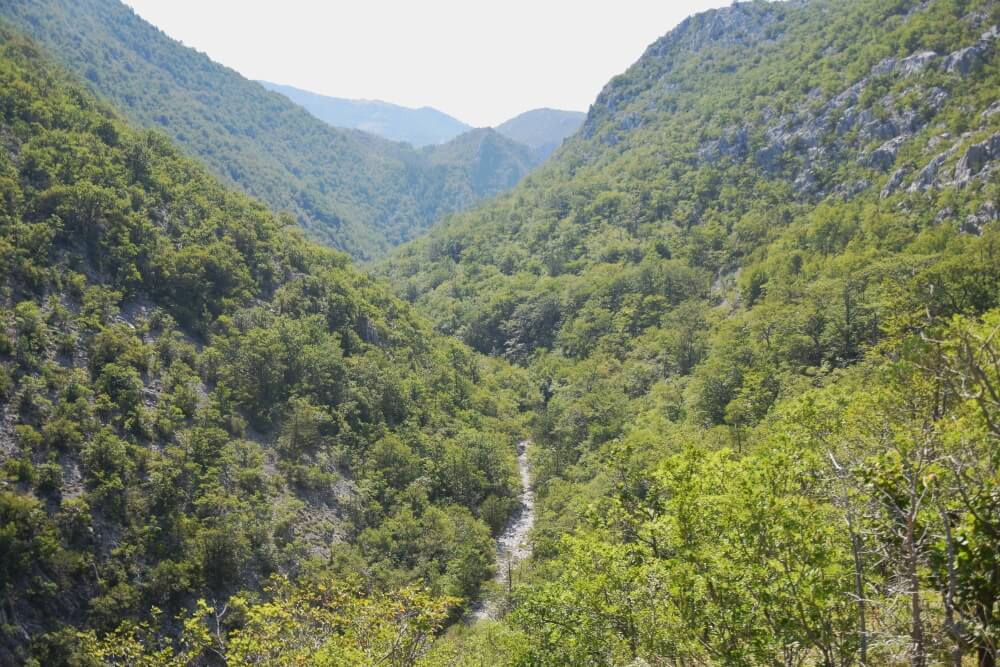
Previously, water ran forcefully through Mala Paklenica Canyon. In fact, that’s the reason it’s here. These days, this 12 km long and 400–500 wide canyon is often dry. At its narrowest, it is only 10 m wide. Surrounding cliffs rise up to a height of 650 m.
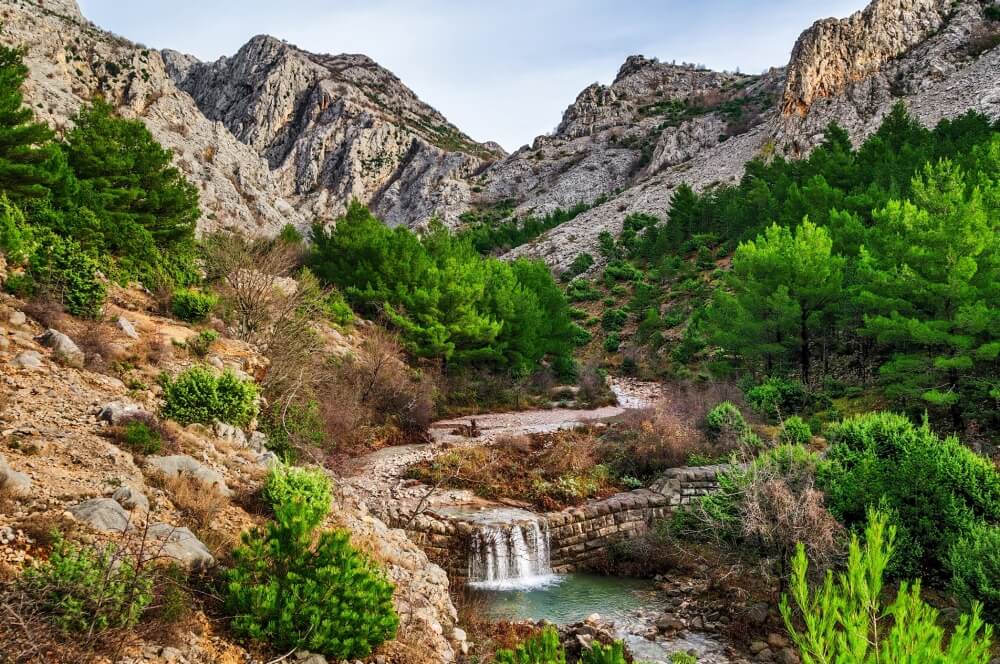
Velika Paklenica
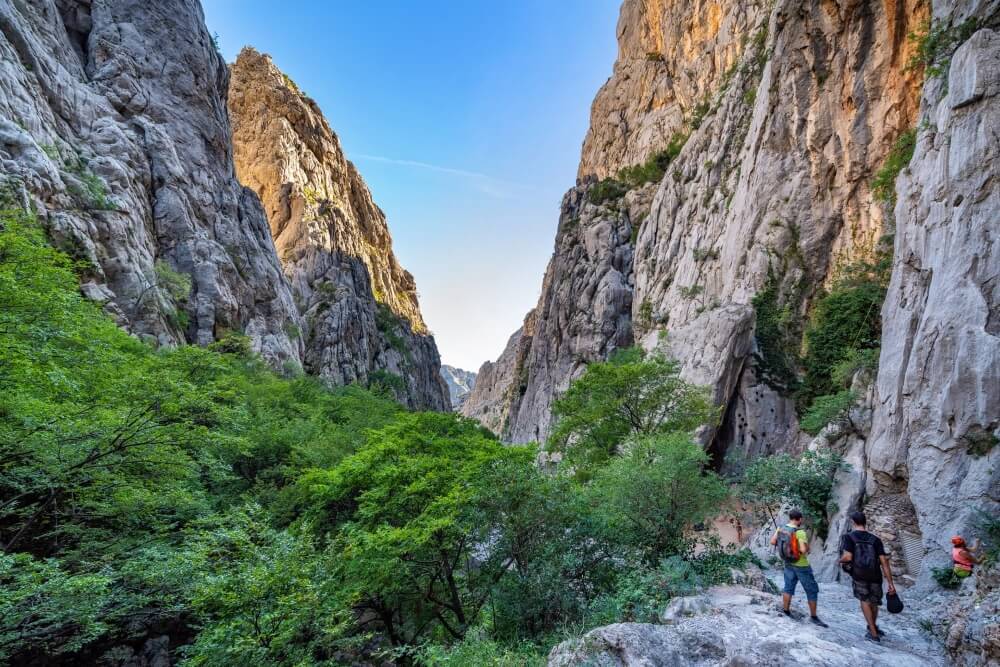
14 km long and 500–800 m wide, Velika Paklenica canyon is an epic trail offering most of the park activities. At its narrowest, it’s only 50 m wide. Vertical cliffs, rising in parts over 700 m, line both sides of the canyon. Within the narrowest parts, you’ll find rock climbers clinging to the karst.
Hiking Routes: The Trails of Paklenica
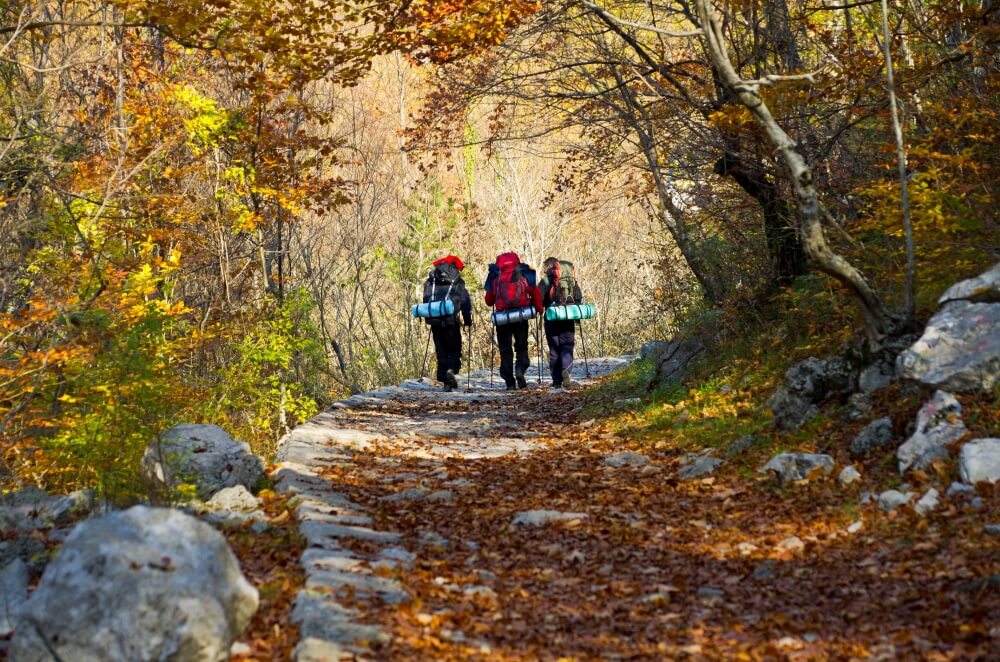
Altogether, there are around 1000 registered hiking trails in Croatia. A not inconsiderable 70 of these run through the South Velebit area. Subsequently, this is one of the most popular hiking regions in the country. Among all the hiking routes through Paklenica, some can be extremely demanding. If you want to challenge yourself, then you can find out more about them from PD Paklenica (see below). But, for now, we’ll show you some of the recommended hiking routes and the sights you can see. All journey times below cover from start point to destination. They do not include time spent on returning.
Under 2 hours
1) Velika Paklenica canyon – Anića kuk – Foresters house Lugarnica – Mountain hut Paklenica
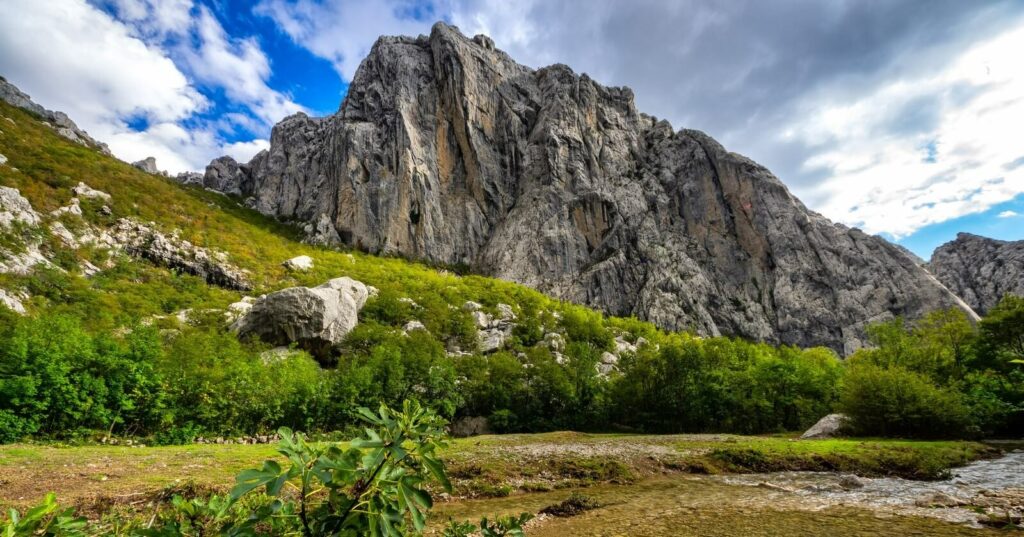
On this entry-level hike, you’ll walk past an old water mill, Velika Paklenica stream, flora and fauna and a climbing site. Also, you’ll see Anića kuk, Velika Paklenica canyon, karst relief and old settlements.
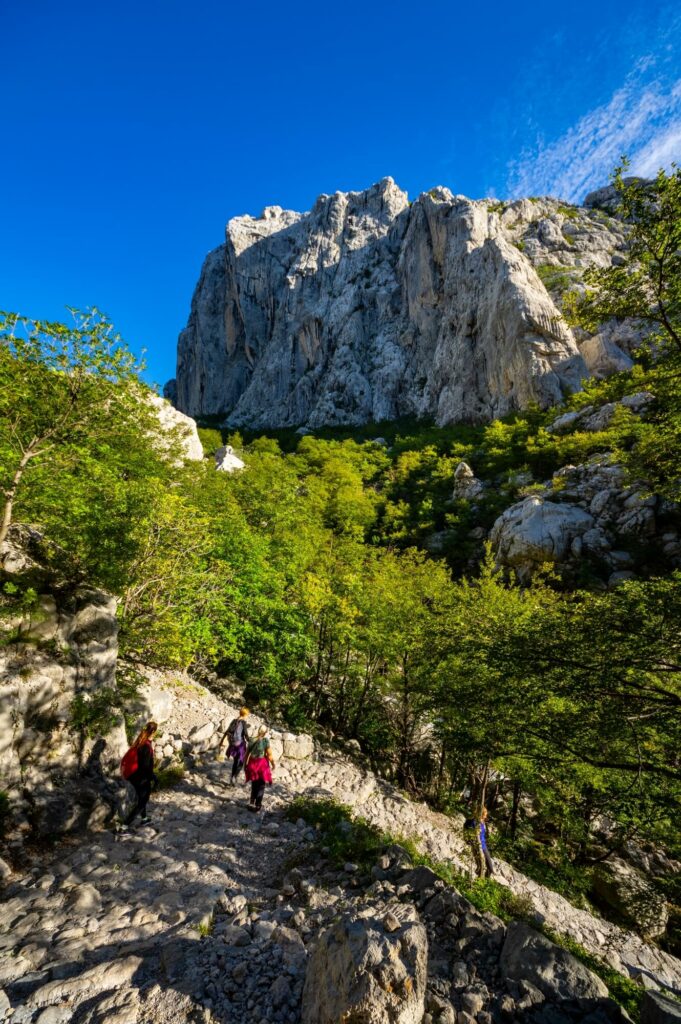
Difficulty: 1.5/5
Hiking time: 2 hours
2) Velika Paklenica canyon – Anića kuk – Manita peć cave
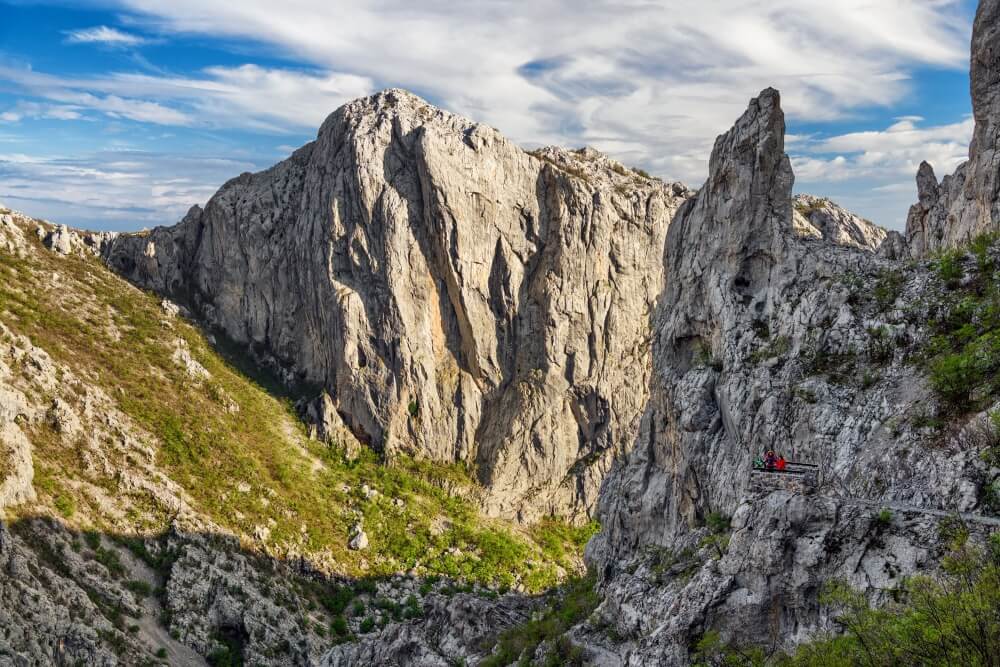
On this easy hike, you’ll walk past Velika Paklenica stream, flora and fauna and a climbing site. Also, you’ll see Anića kuk, Velika Paklenica canyon, karst relief and Manita peć cave.
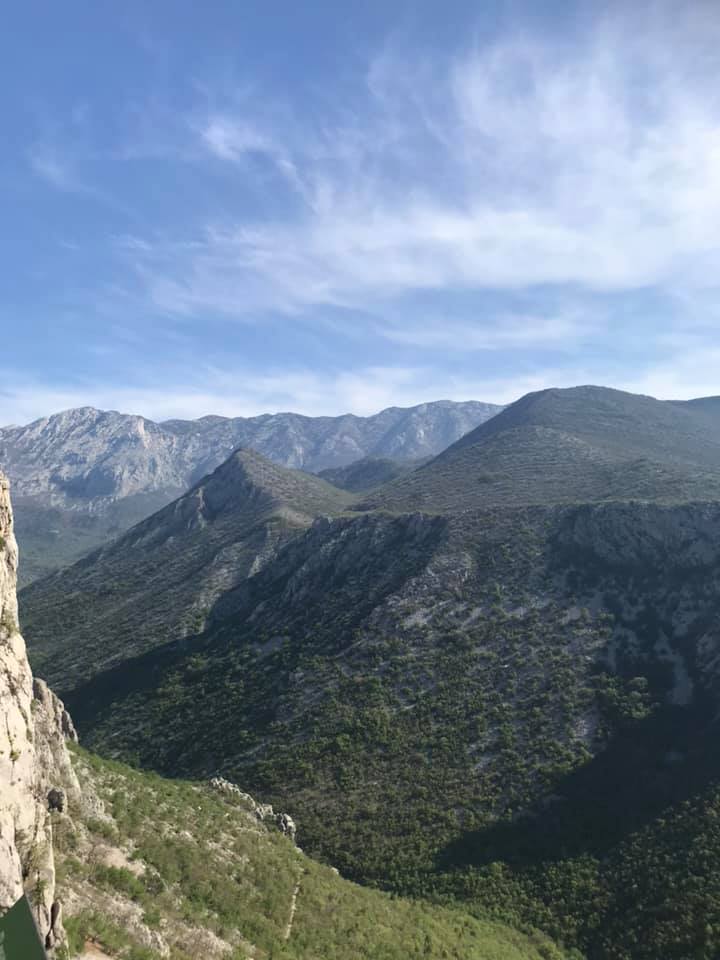
Difficulty: 2/5
Hiking time: 1 hour 30 minutes
Intermediate
1) Mountain hut – Buljma Pass – Mountain shelter Struge
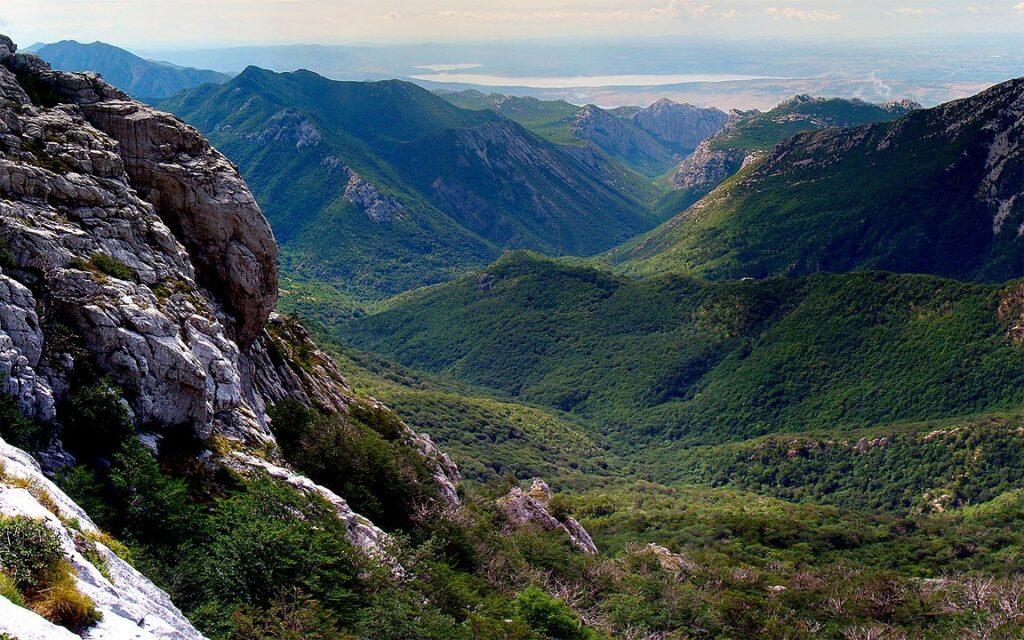
On this trail, you’ll see flora and fauna, glacier remnants, karst relief and panoramic views.
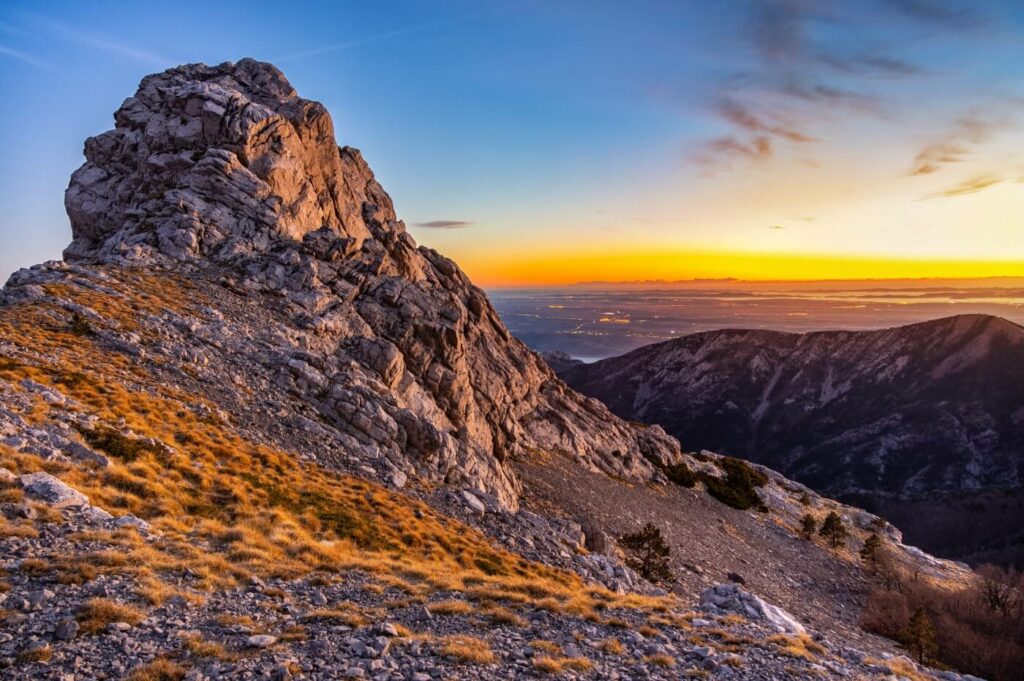
Difficulty: 2.5/5
Hiking time: 3 hours 30 minutes
Over 5 hours
1) Mountain hut Paklenica – Crni vrh – Velika Močila – Grabove valley – Velika Paklenica canyon
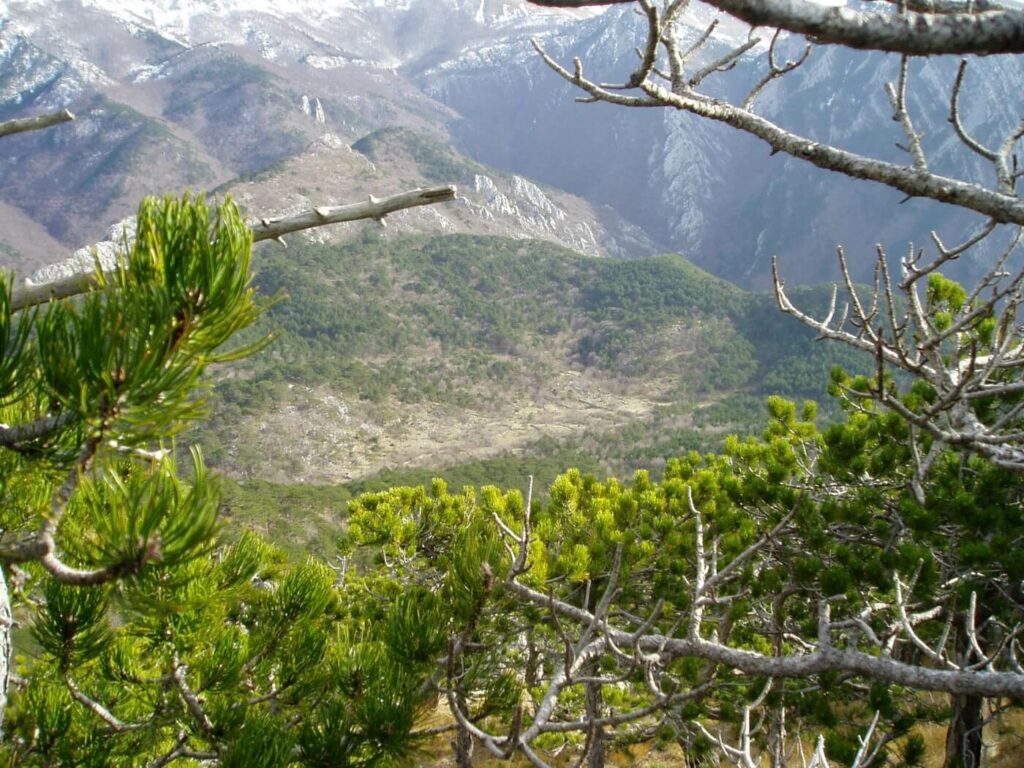
On this trail, you’ll walk past traditional architecture, black pine and beech forests. Also, you’ll see panoramic views, karst fields and their flora and fauna.
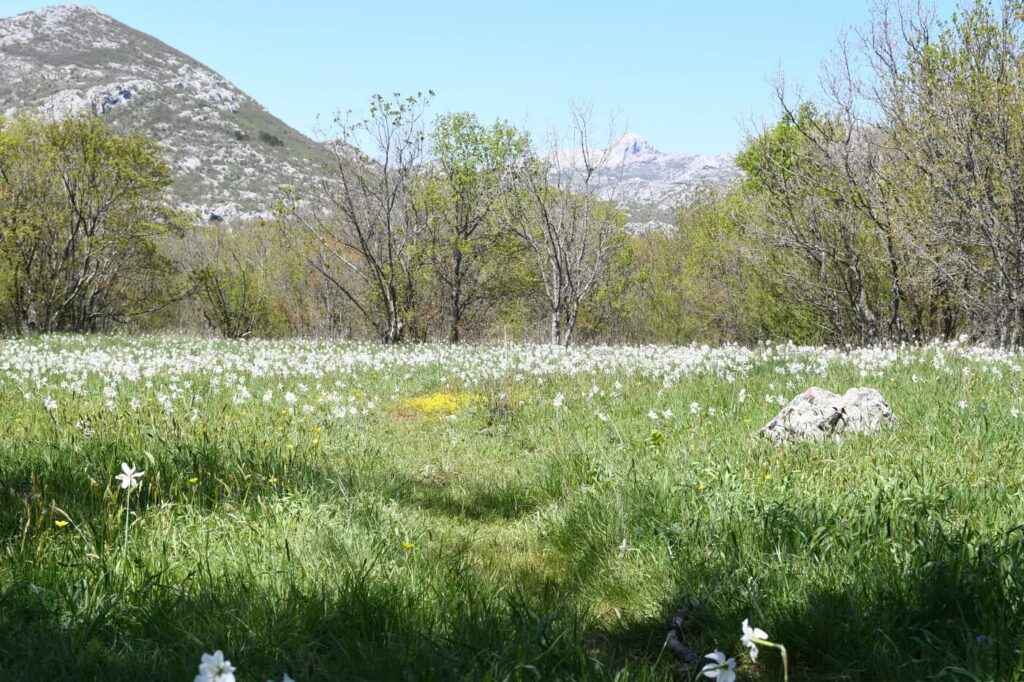
Difficulty: 3.5/5
Hiking time: 6 hours
2) Mountain hut Paklenica – Mountain shelter Ivine vodice – Sveto brdo – Mountain shelter Vlaški grad
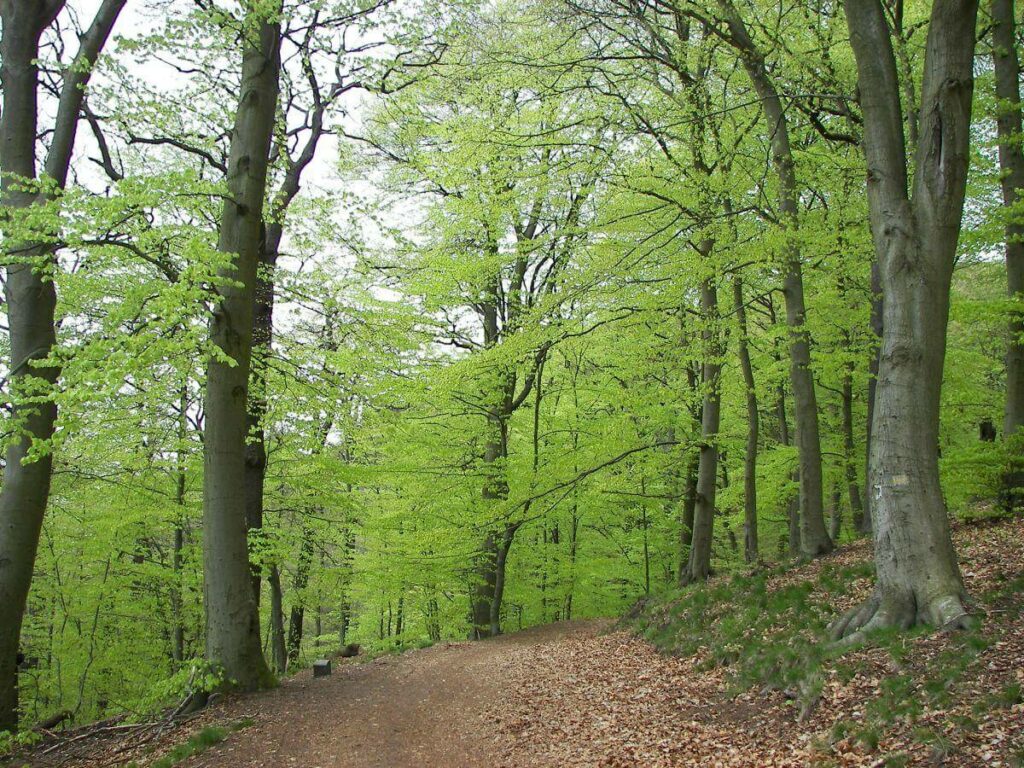
On this hike, you’ll walk past mountain grasslands and beech forests. Also, you’ll see panoramic views.
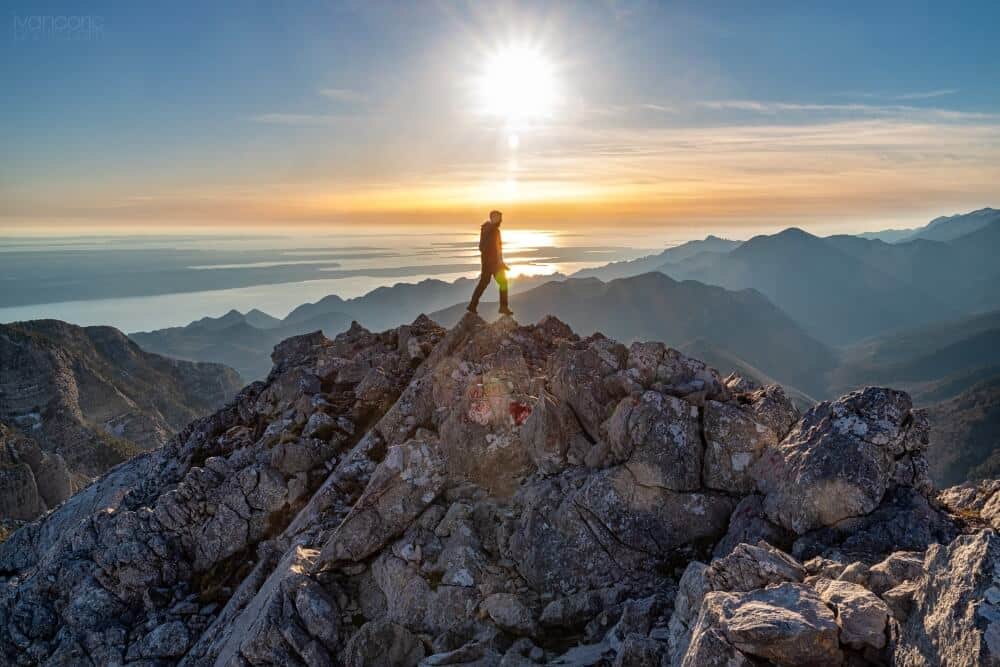
Difficulty: 3.5/5
Hiking time: 6 hours 30 minutes
3) Manita peć cave – Vidakov kuk – Njive – Velika Paklenica canyon
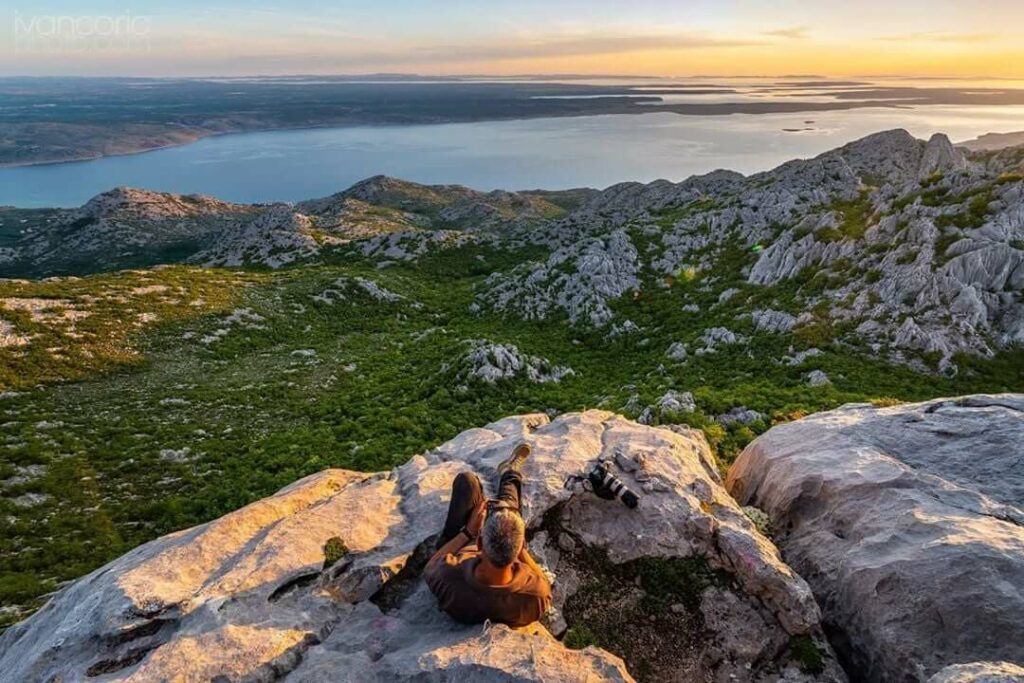
Not only do you get to see Manita peć cave on this route, but also karst relief and panoramic views.
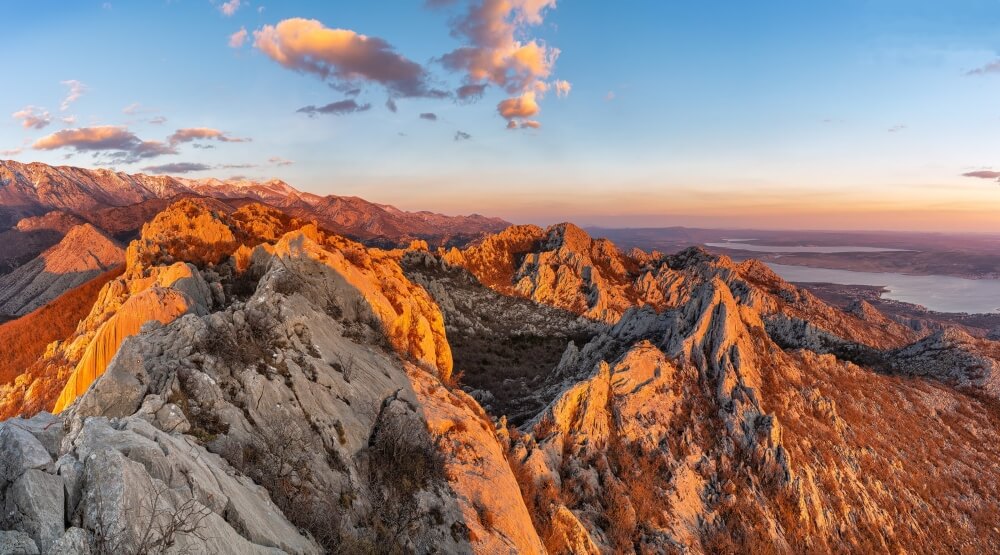
Difficulty: 4/5
Hiking time: 5 hours 30 minutes (plus 1 hour if visiting the cave)
4) Mountain shelter Struge – Marasovac – Vaganski vrh – Sveto brdo – Mountain shelter Ivine vodice
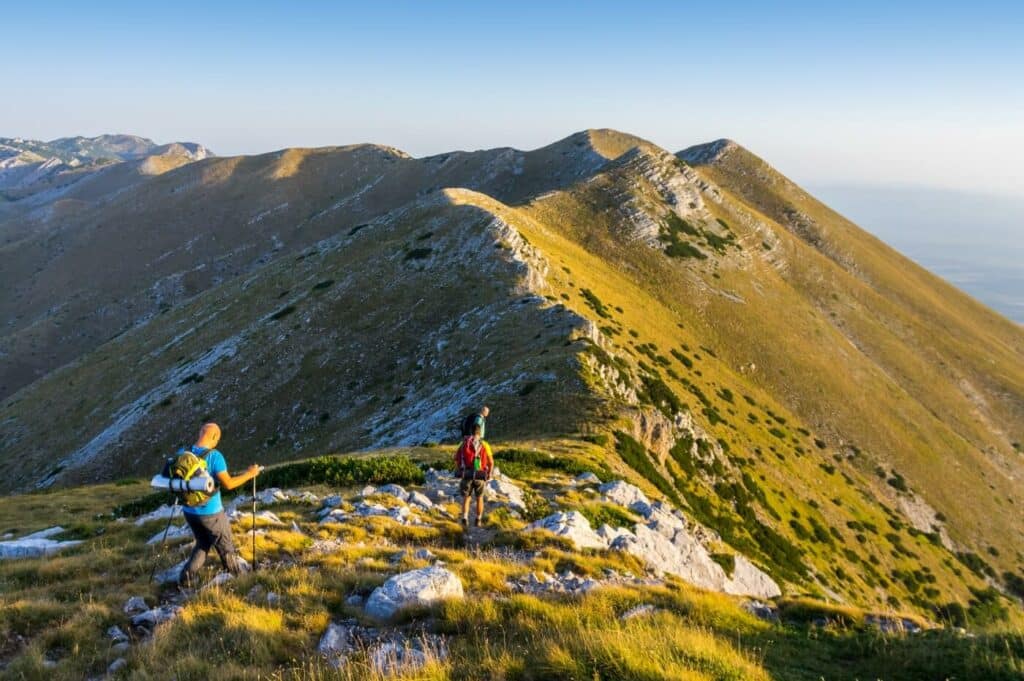
If you’re looking for a two-day hike, then this is a good option. Not only will you see grasslands and mountain flora, but also panoramic views.
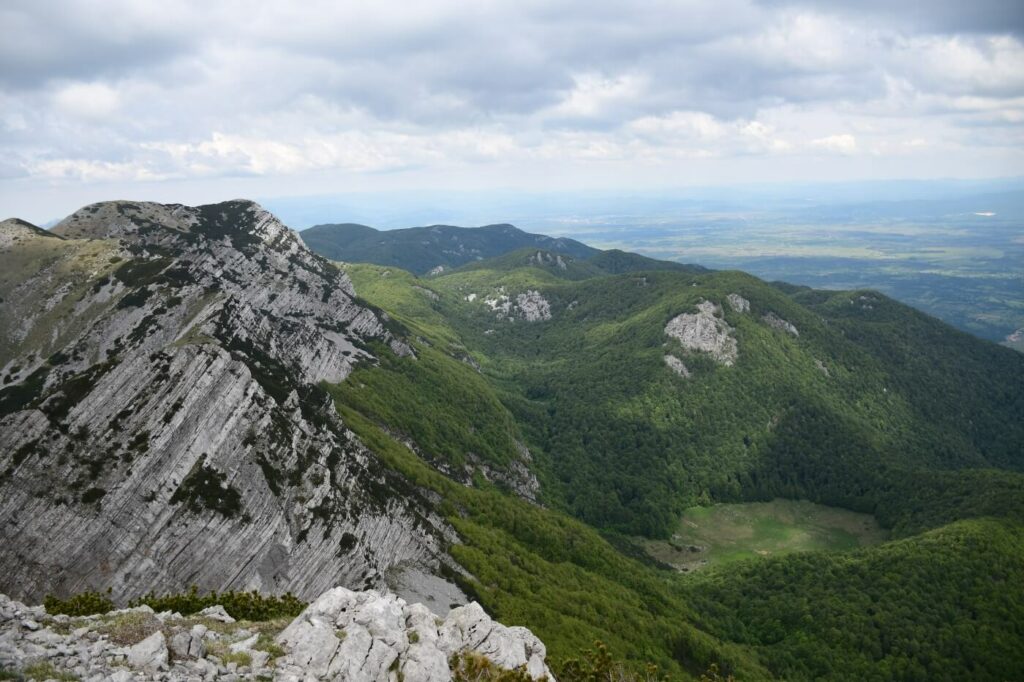
Difficulty: 4/5
Hiking time: 7 hours 30 minutes
5) Mala Paklenica canyon – Njiva Lekina – Velika Paklenica canyon

Markedly, this is the trail to take if you want to catch both canyons in the same hike. Not only will you be challenged by difficult terrain, but also you’ll be reward by epic karst field views.
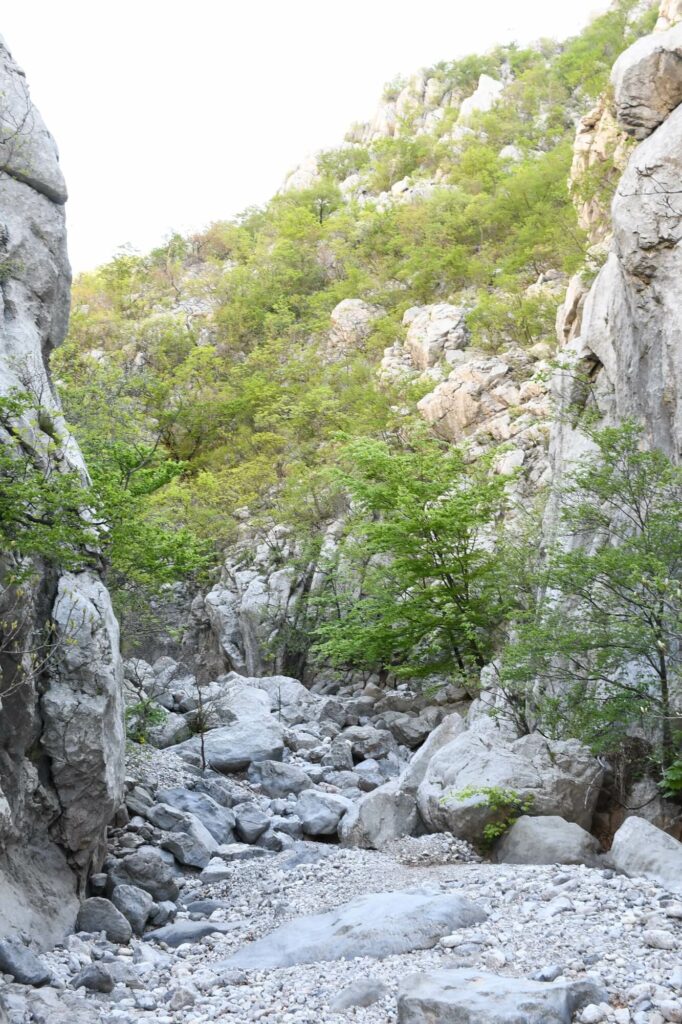
Difficulty: 4.5/5
Hiking time: 7 hours
6) Mountain shelter Struge – Marasovac – Lipa staza – Velika Paklenica canyon
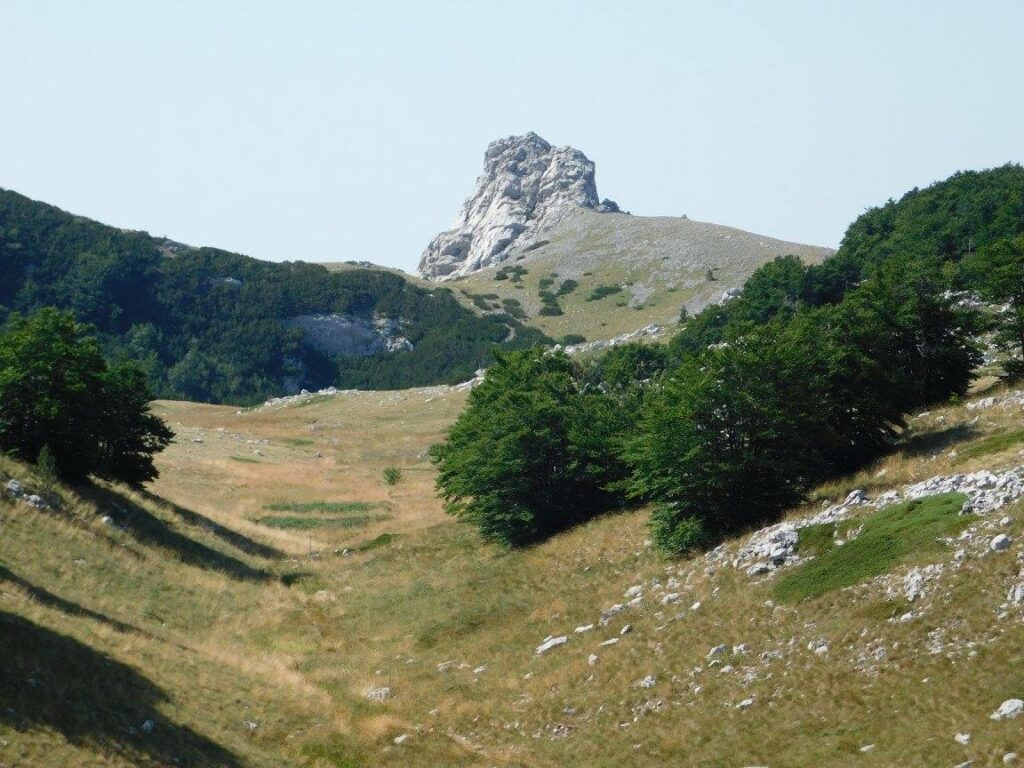
Both demanding terrain and epic panoramic views will entertain you on this hiking route. Additionally, you’ll see mountain grasslands, Alpine flora and karst fields.
Difficulty: 4.5/5
Hiking time: 7 hours 30 minutes
Paklenica National Park Hiking Trail Map
The Paklenica National Park has put together a very good Tourist and Trekking Map. It shows you all the recommended hiking trails through the park. Furthermore, it has been verified and published by the Croatian Mountain Rescue Service. If you want to check it out, then look here. Additionally, try out the Interactive hiking map of Croatia (developed by Croatian Mountaineering Federation) here.
Paklenica National Park Climbing
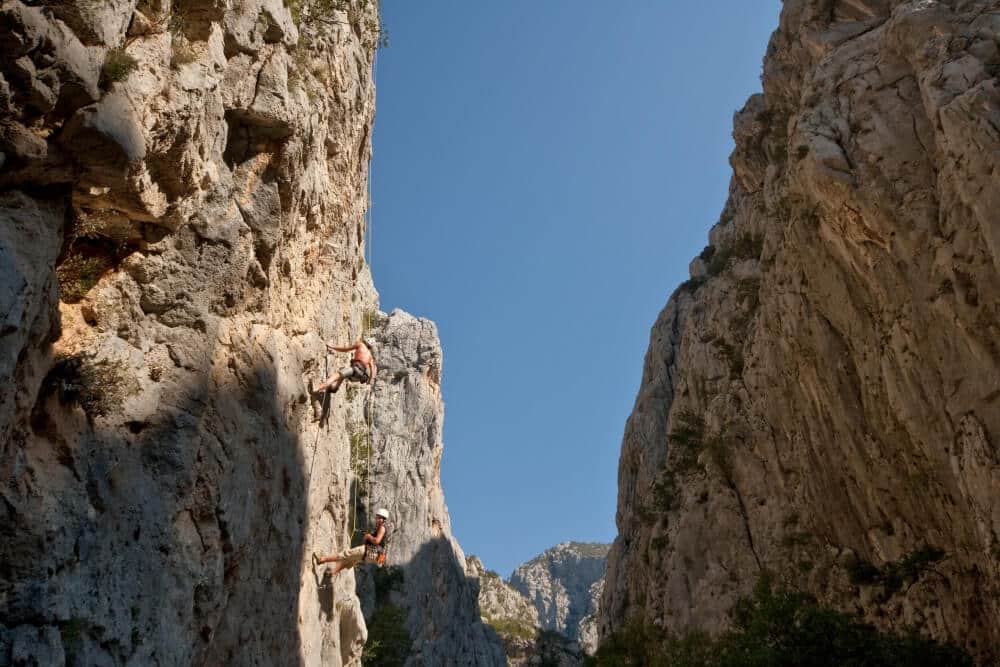
In the valleys of Paklenica, the karst walls rise up sharply. Cracks within these walls are made of hard, often sharp rock. Generally, the walls are vertical. But, sometimes they’re slightly oblique. What’s more, there are an endless number of features like this for you to discover. And an endless number of routes. In fact, there are today almost 600 well-equipped climbing routes within Paklenica National Park.
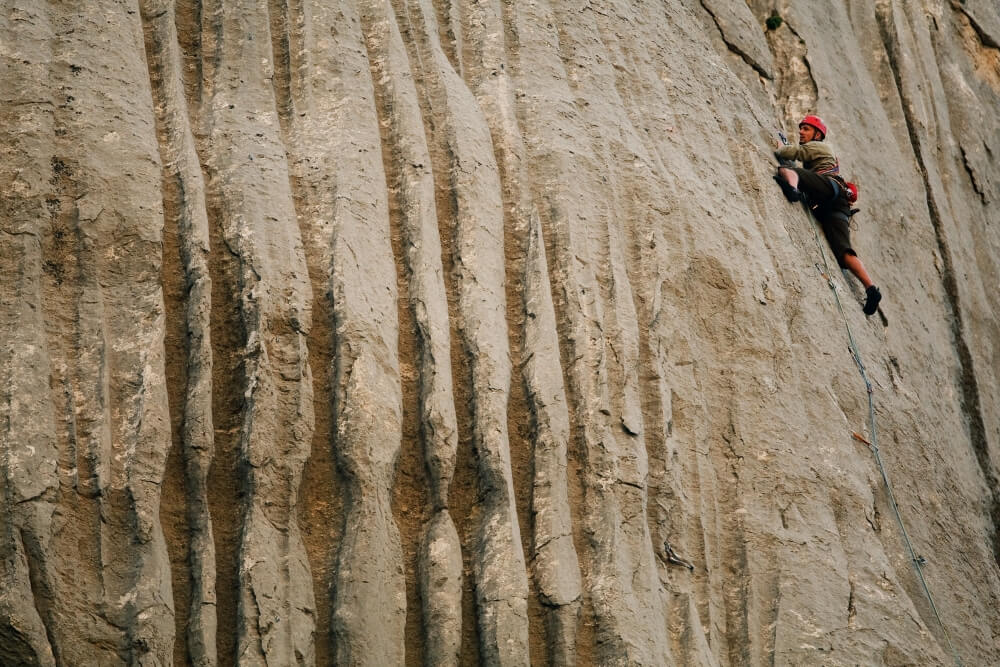
People have been coming here to take on Paklenica’s rock faces since the 1930s. At first, it was mostly locals – Croats and Slovenes. Afterwards, as the repute of its challenges spread, international climbers arrived. Indeed, you can still meet many among those climbing the park today. Both for beginners and world-class, there’s something for everyone here. Not for nothing is Paklenica National Park the most visited climbing site in Croatia, and the largest in Southeast Europe.
Climbing in Paklenica National Park
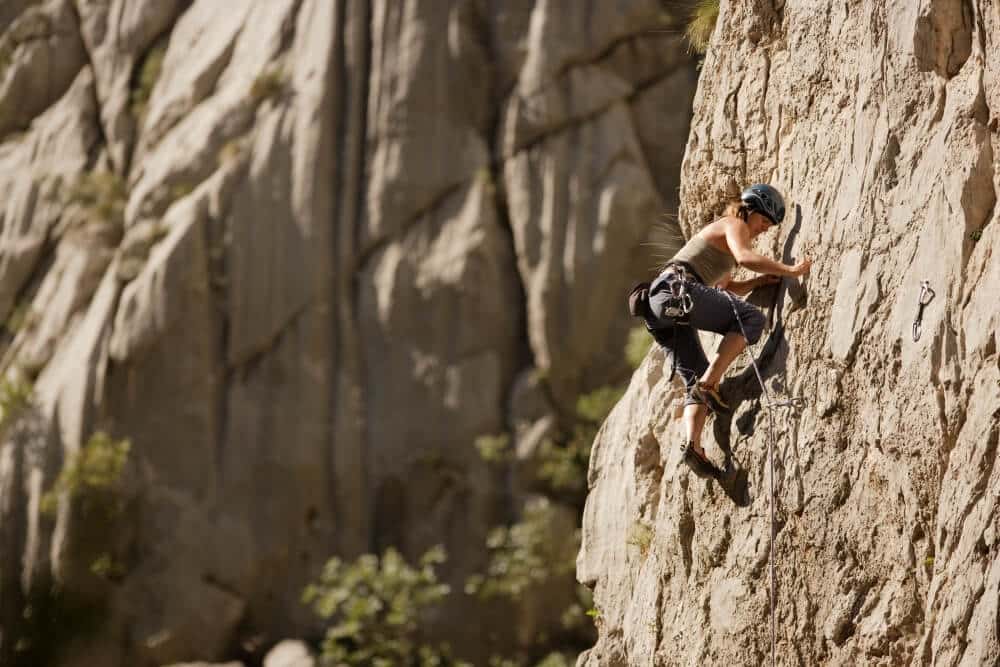
Generally, the largest number of climbing routes in Paklenica National Park is located in the narrowest part of the Velika Paklenica gorge. Indeed, you’ll find climbs for all abilities here. Known as Klanci, this gorge is overarched by Kukovi ispod Vlake, Debeli kuk, Kuk od Skradelin and Ćuk. By comparison, within these rocks, you’ll find longer climbing routes. Without a doubt, the most famous climbing rock in Paklenica is Anića kuk.
Specifics for experienced climbers
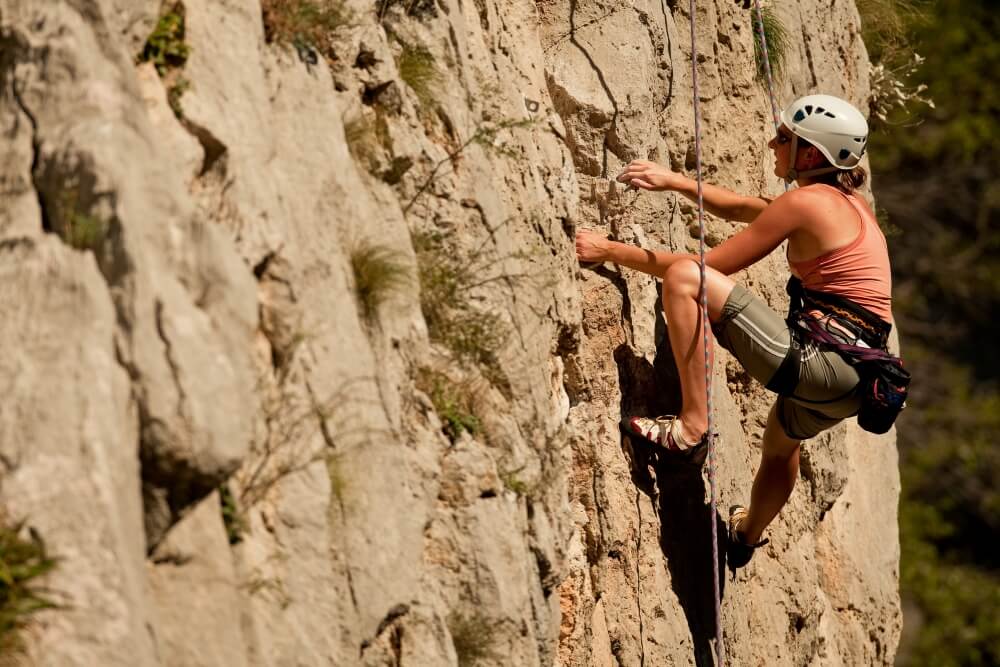
If you’re going to take on the challenge of a large or serious climb, then there are better places to look for detailed information. But, any curious climbers should know that most routes are equipped with bolts (spits). Contemporary climbers are undertaking the effort to reequip the oldest routes, some of which might still have pegs (pitons).
At the present time, Il Marattoneta (8b+) and Moskito (8b) are two of the toughest routes according to the UIAA grading scale. If you’re embarking on an older, not-yet-reequipped route, then take friends, a set of nuts, and a few slings with you. You’ll find Croatian Mountain Rescue Service members on duty at Paklenica’s climbing sites every day within July and August. If you want to know more about the rules of climbing in Paklenica, then look here.
Areas where climbing is forbidden in Paklenica National Park
In order to safeguard rare flora, rare fauna, their habitats and to protect you, there are places where climbing is forbidden. Certainly, the entire area of Mala Paklenica is off-limits to climbers. By comparison, in Velika Paklenica you’ll find lots of places where climbing is allowed. However, gorge climbing is banned on Debeli kuk from the lower to the upper parking lot (to the bunker). Elsewhere on Debeli kuk, climbers must not ascend higher than 200m. Climbing is also banned from the left of Manita peć to the upper part of Velika Paklenica.
Flora and Fauna
Plants
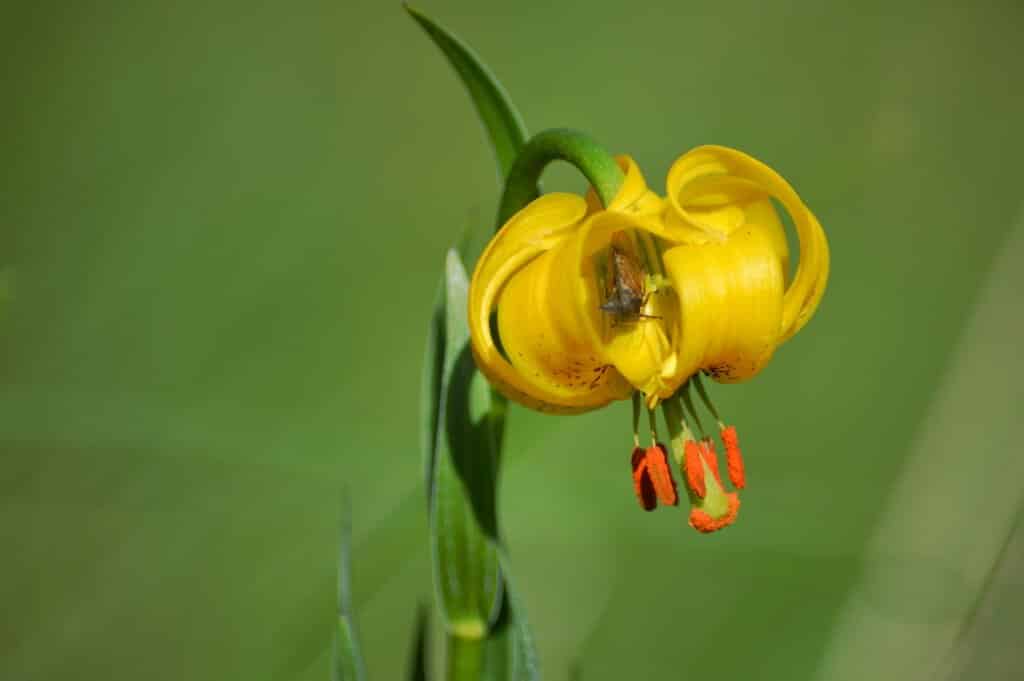
At the present time, 1,000 plant species and subspecies have been recorded here. Moreover, 79 of them are indigenous exclusively to the park’s region. Subsequently, the park is a valuable floristic area, not just to Croatia and Europe, but to the world.
Cracks in the karst rock create microclimate conditions where some rare plants thrive. Elsewhere, you’ll find wildflowers growing in mountain meadows. Some of the indigenous plants here you’ll find only in Croatia. Namely, Window Bellflower (Campanula fenestrellata), Croatian Bellflower (Campanula cochleariifolia) and Waldstein Bellflower (Campanula waldsteiniana).
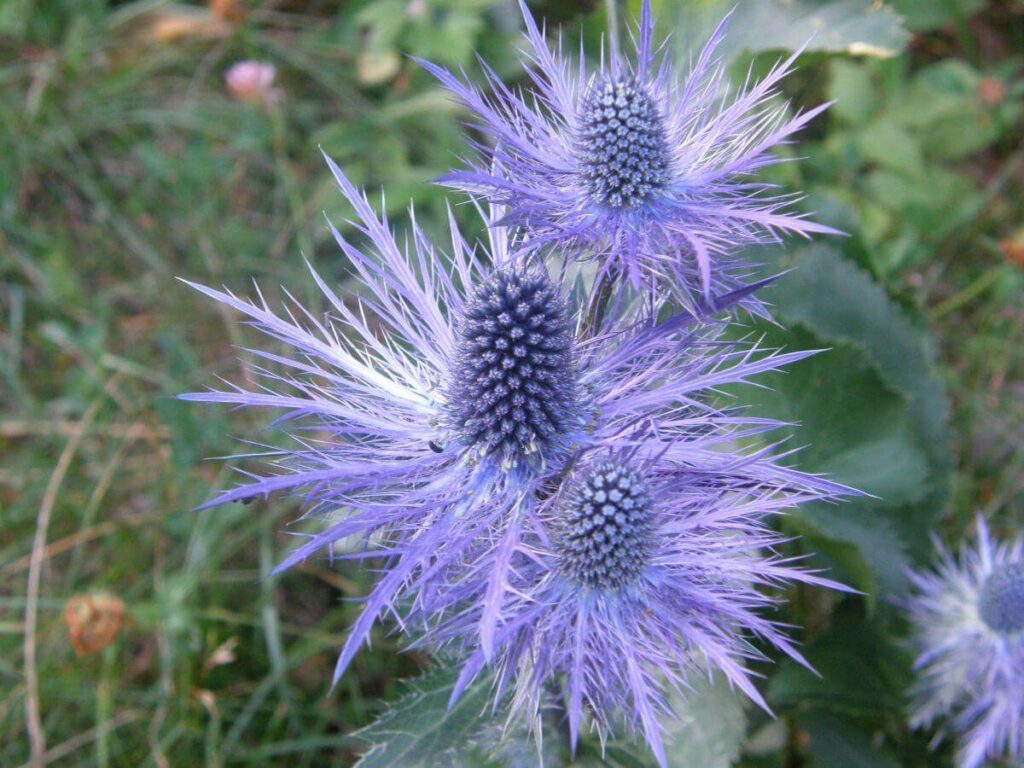
Animals
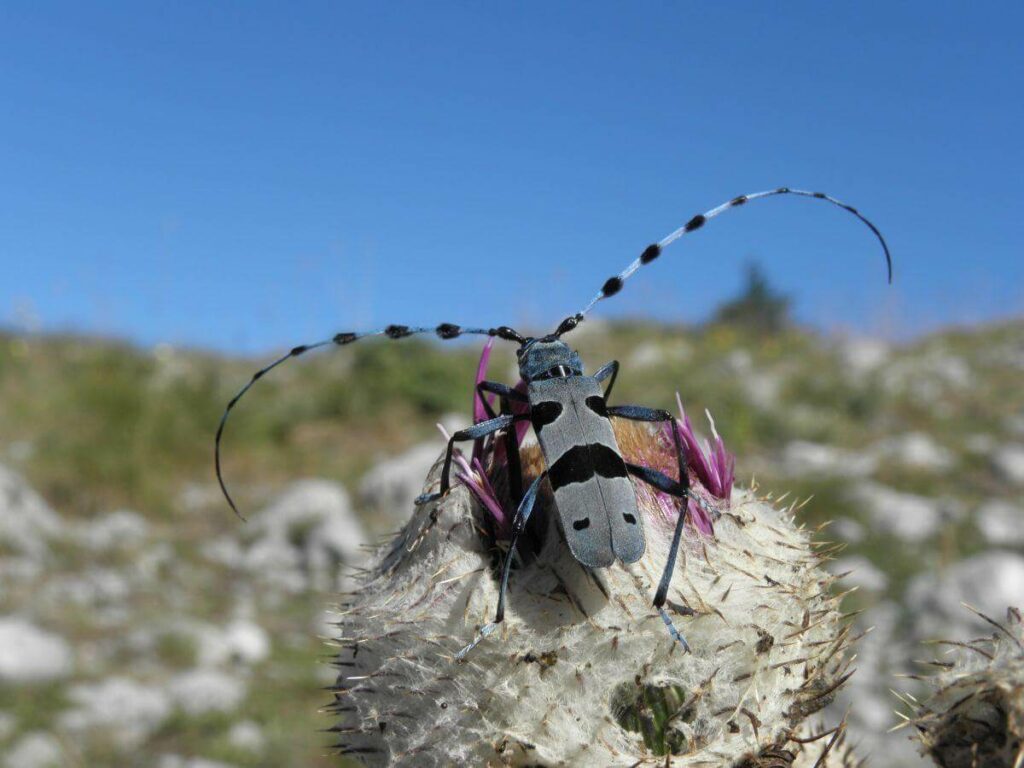
Up to the present time, 84 species of diurnal butterflies have been recorded in the Park. You’ll see some fluttering through the mountain meadows. By comparison, Paklenica’s 31 amphibian and reptile species are more shy. Indeed, you’ll be lucky to catch sight of a Nose-horned Viper (Vipera ammodytes) or the very rare Orsini’s viper (Vipera ursinii macrops).
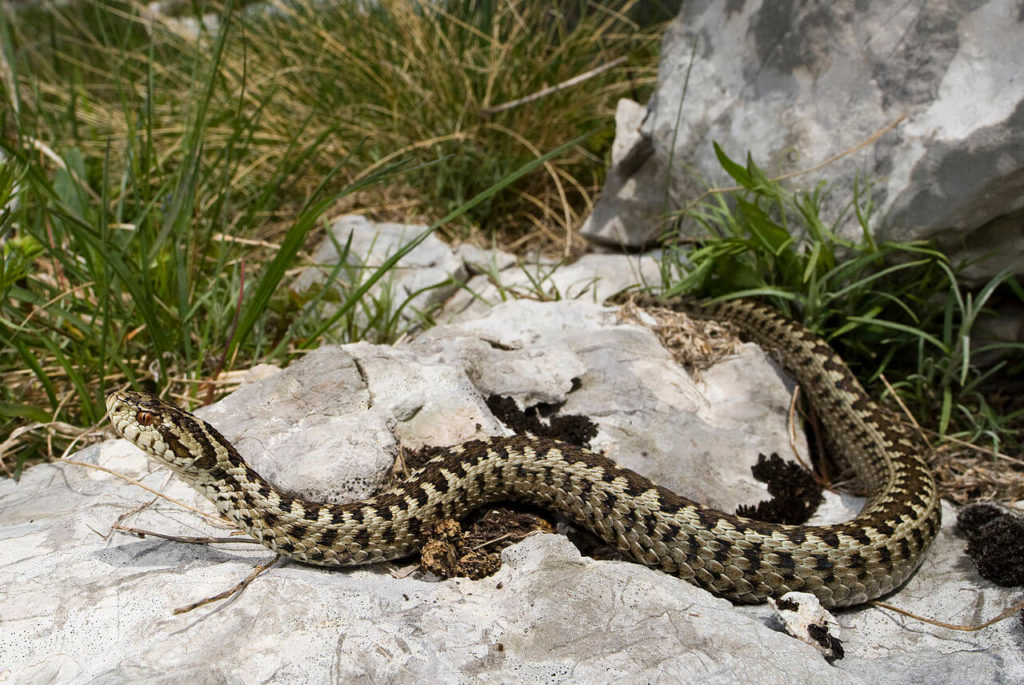
At the present time, 260 bird species have been recorded here, making them the park’s most numerous vertebrates. Among them, you might see some rare birds of prey. Namely, Golden Eagle (Aquila chrysaetos), Peregrine Falcon (Falco peregrinus) and Short-toed Eagle (Circaetus gallicus).
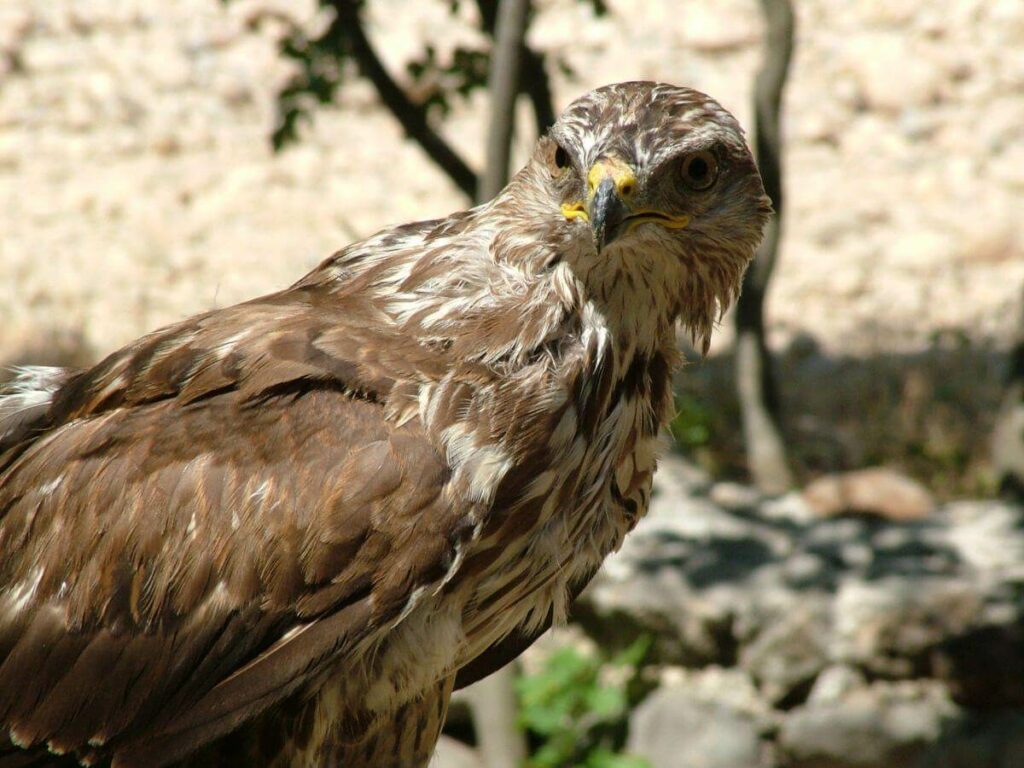
Among the mammals living here, you’ll find several seldom-seen predators. Namely, Wild Cat (Felis sylvestris), the Beech Marten (Martes foina) and Least Weasel (Mustela nivalis). Also, three large carnivores – Brown Bear (Ursus arctos), Wolf (Canis lupus) and Lynx. Additionally, some 24 different species of bats live here.
Manita peć cave
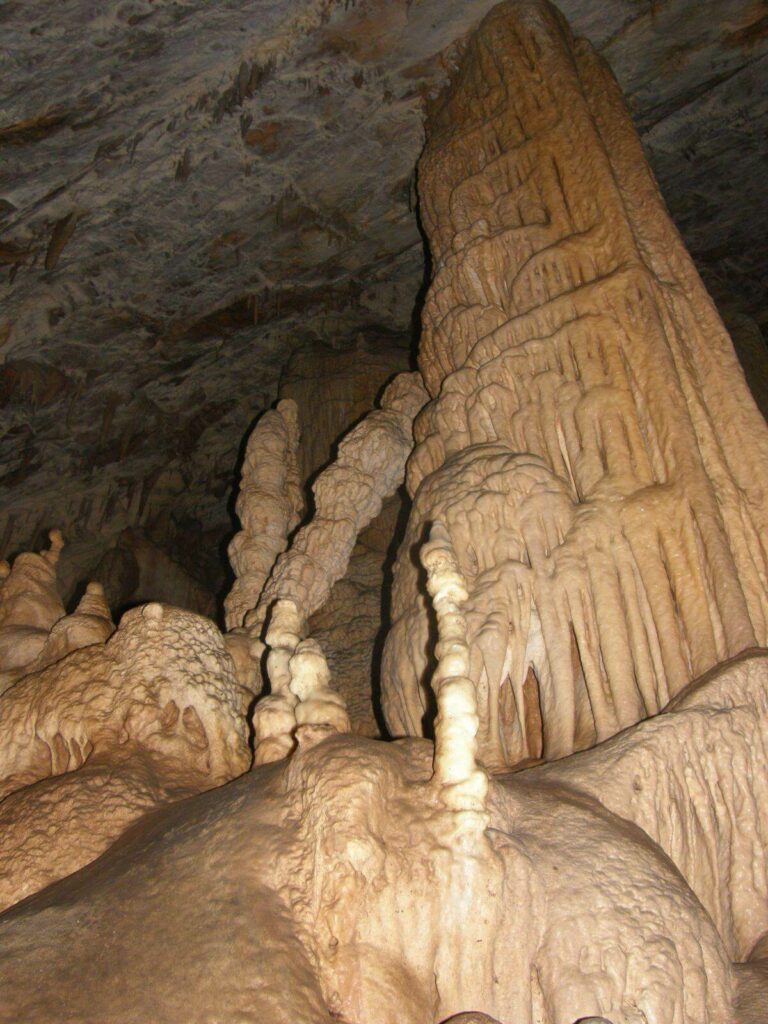
Among 115 speleological objects so far known in the Paklenica National Park, Manita peć is the most famous. It’s the park’s only show cave accessible to the public through guided visits. The cave’s broad chambers and the beauty of its rock formations have been astounding visitors since 1937.
You’ll find Manita peć at an altitude of 570 metres a.s.l, and the walk up from the Velika Paklenica parking lot takes about 1.30 h. If you want to enter the cave, then you must take the guided tour. Because lots of rare invertebrates live in this area. Also, there is an extra fee for the cave tour. Ask about this at the park entry when you buy your ticket. You may need to take cash with you to pay for the tour at the cave entrance.
Accommodation, Hotels, Camp, Zadar, Starigrad: Where to stay in Paklenica National Park
Starigrad
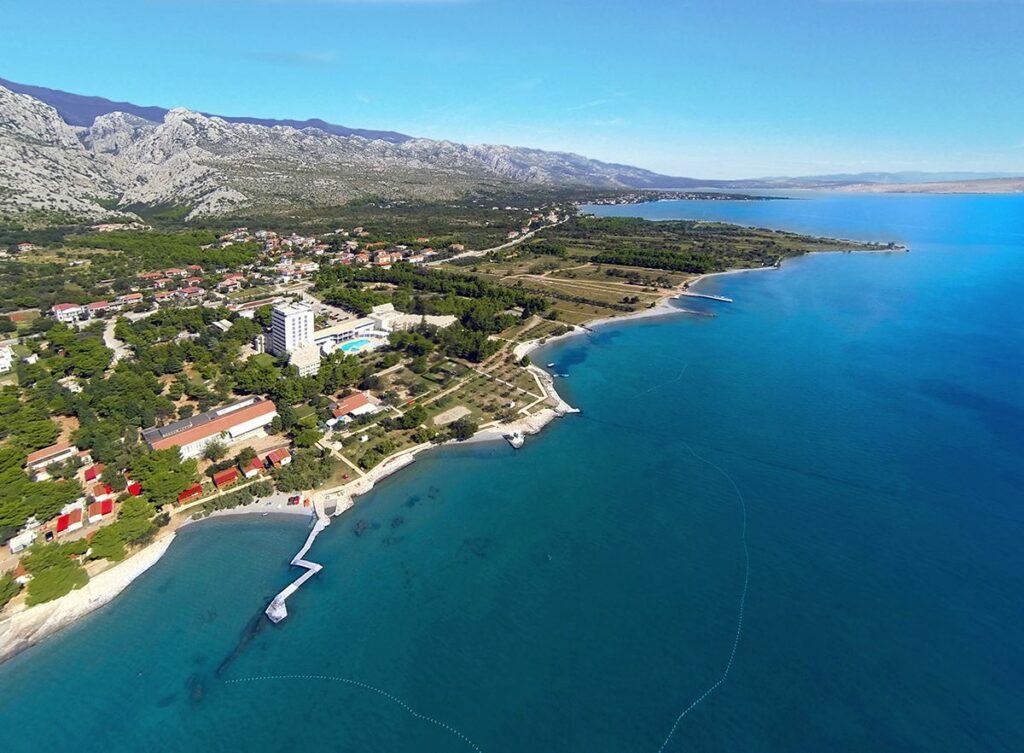
You’ll find the town closest to the park very well suited to accommodating guests. Starigrad and its riviera have long been welcoming visitors to Paklenica and others. Sitting on the edge of Croatia’s largest Adriatic channel, the pretty town has a range of apartment and room options, which you can check below. The 3-Star Bluesun Alan Hotel is the highest-rated hotel here.
Zadar
If you’re looking for more of a city stay, then try Zadar. Not only is it the county capital, but it has a wealth of culture and event options. Also, it’s a major university town and its port offers a gateway to Croatian islands. Accordingly, there is a huge range of accommodation options here, which you can check out below. Look out for our Zadar in a Page guide, coming very soon.
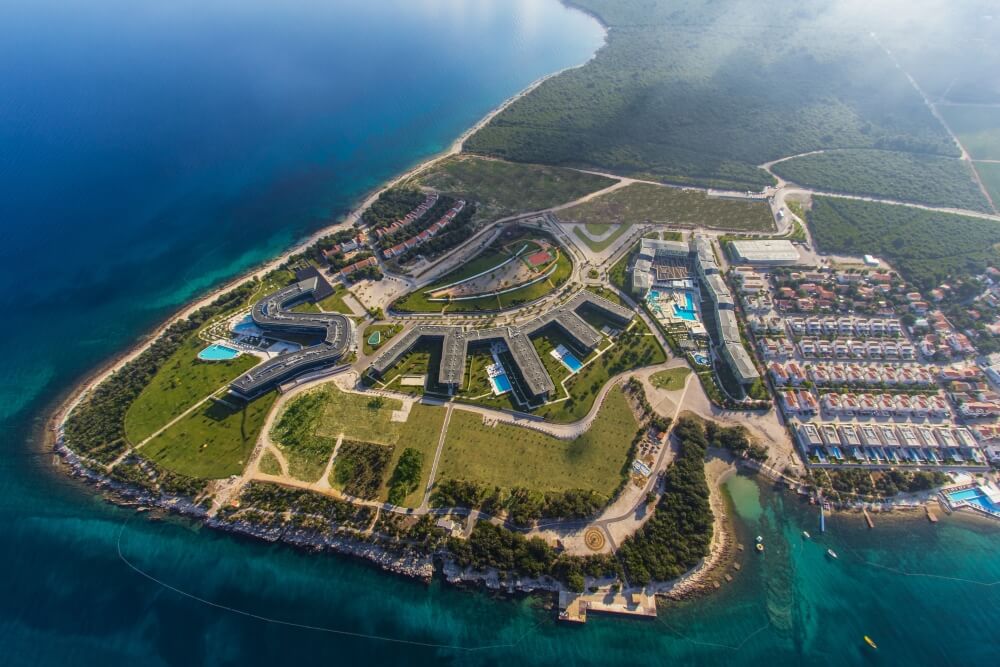
If you head up into the hills of Paklenica to get a sea view, then you’ll also see the Zadar peninsula. Situated on its northwest tip is the Falkensteiner Resort Punta Skala. A beautiful beachside complex with incredible architecture, it has a range of accommodation offers. Most luxurious is the five-star Hotel Spa Iadera which boasts Croatia’s largest spa centre. Both indoor and outdoor pools, saunas, herb gardens, massage and beauty treatments make up its offer.
Just next door you’ll find the Family Hotel Diadora. Both spa features and a waterpark can be found within its 2000m² of pools, slides and water features. If you’re looking for more private seclusion, then the resort also has Premium Apartments Senia. Each comes with spacious terraces or balconies and there are two private, outdoor pools. The whole resort is filled with activity options like mini-golf and courts for tennis and other sports.
Camping / Mountain Houses / Mountain Shelters
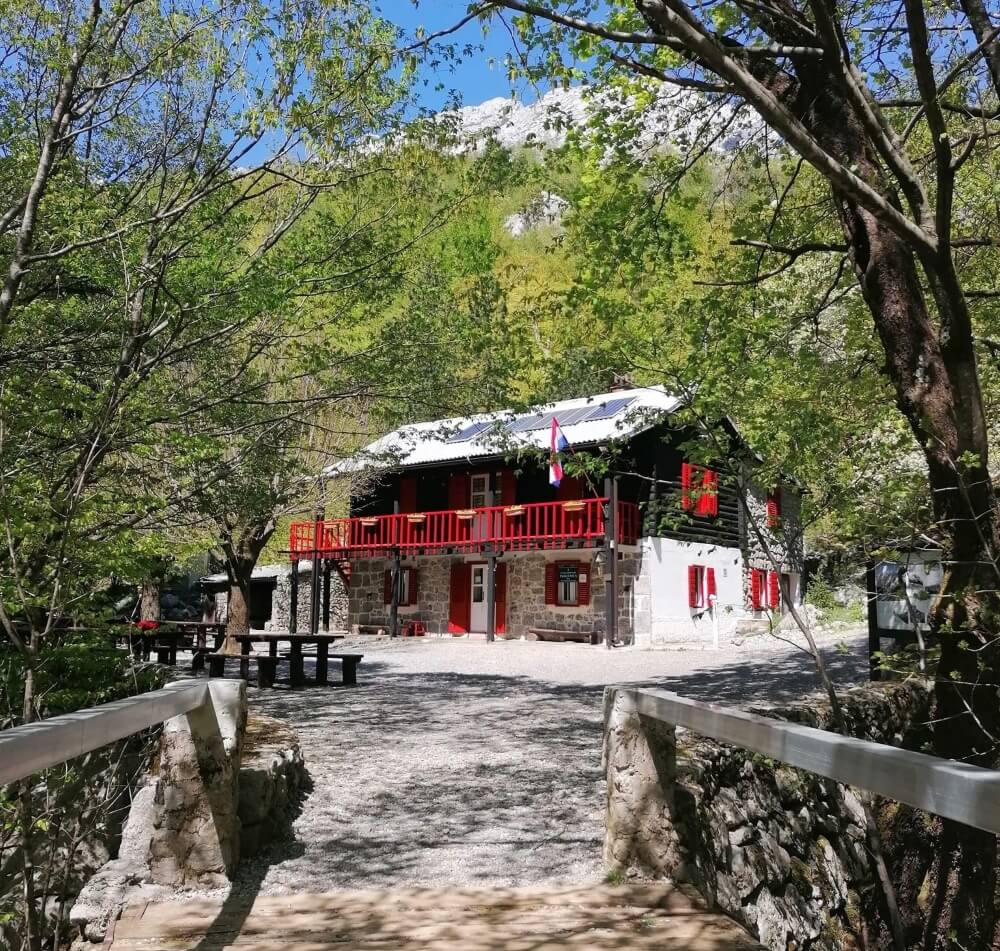
It is strictly prohibited to camp within the park itself, in a tent or trailer/camper. If you’re on a two-day hike or climb, then there are several mountain shelters you can use for free. Although reservations are not necessary, they are advisable for larger groups. Because the shelters are quite small -10 – 20 sleeping places. Alternatively, there are mountain houses in a higher category and with a fee for overnight stays. Not only are these better equipped, but also offer food and drinks. If you want to find out more, then see below for park and mountaineering society contacts.
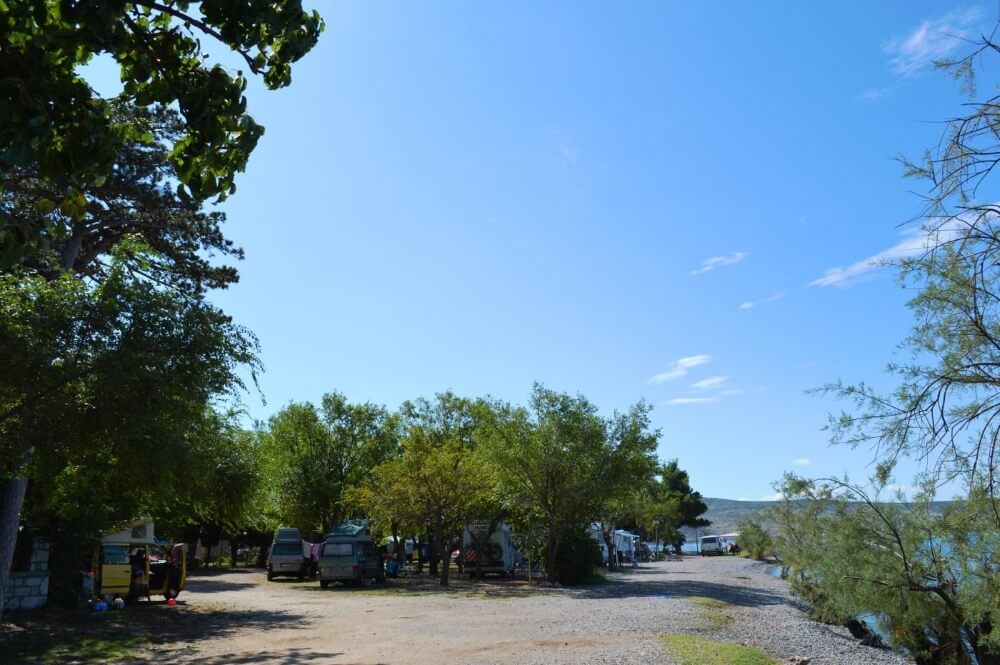
The nearest camp to the park is Camp Nacionalni Park, which is next door. Not only does it have pitches for tents, but also accommodates trailers, caravans and motorhomes. Also, it’s a beachside campsite. If you want more details, then look here.
Paklenica National Park Entrance, Tickets/Fees and Opening Hours
As shown above, there are two entrances into Paklenica National Park.
Main entrance
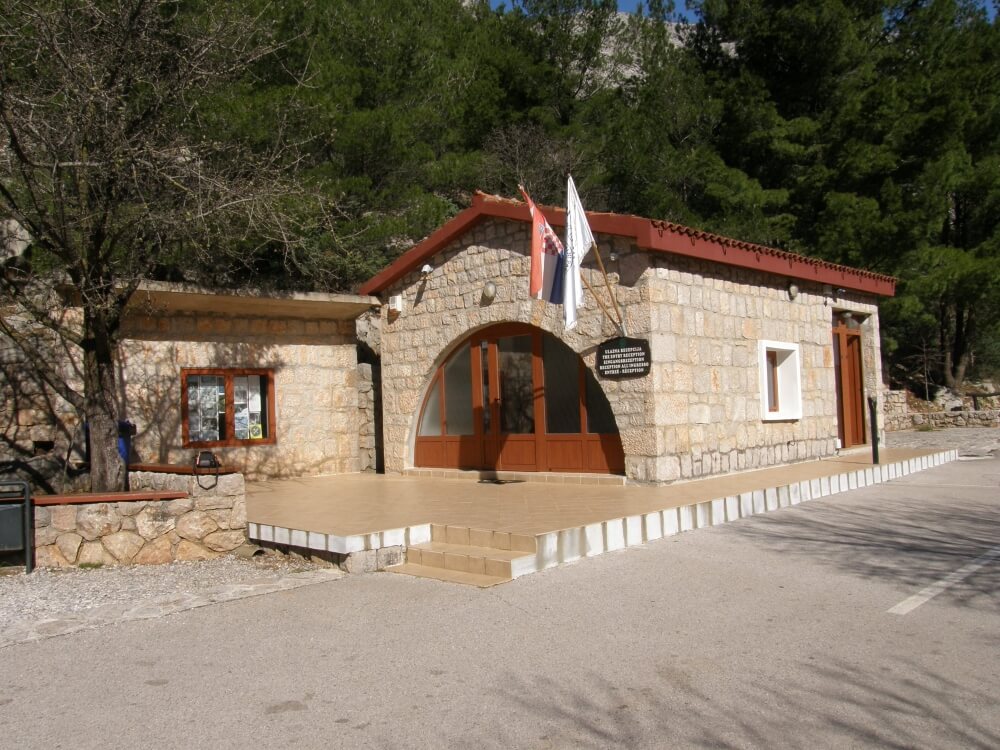
The Main Entrance, to the northwest, sits at the start of the Velika Paklenica Canyon on Paklenička ulica in Starigrad. Paklenica main entrance GPS coordinates are 44.2940° N, 15.4576° E.
Entrance Two
Lying to the southeast, Entrance 2 sits at the start of the Mala Paklenica canyon in Seline. Paklenica Entrance Two GPS coordinates are 44.2831° N, 15.4928° E. Use Entrance Two to access Mala Paklenica. You’ll find this entrance open only during the main season.
Entrance Fee: Paklenica National Park Tickets

This photo of Campsite Autocamp Pisak is courtesy of Tripadvisor
A standard one-day ticket for entrance to the park costs 20 kuna from November to February, 40 kuna from March to May (and in October) and 60 kuna between June and September. Children under the age of 14 get a 50% discount on these prices. Furthermore, there are discounts for students, Croatian and Slovenian mountaineering association members and senior citizens.
If you want to drive your car into the park’s protected area, it will cost you an extra 10 kuna. Or, if you’re traveling in a larger vehicle like a trailer or camper, an extra 20 kuna.
If you want to check out the full price list, including three and five-day options, then look here.
Opening Hours
Paklenica National Park is open every day from 6.00 to 20.30. Usually, Manita peć cave is open as follows: April – Saturdays from 10.00 to 13.00; May, June, October – Mondays, Wednesdays and Saturdays from 10.00 to 13.00; July, August, September – every day from 10.00 to 13.00.
Paklenica Weather
Starigrad-Paklenica has a Mediterranean climate, with warm dry summers and calm, mild winters. Between May and October you’ll likely experience pleasant weather conditions in Palenica National Park. Although, at the height of summer, the heat can add to the exertion of hiking and climbing. Also, in September and October, you have a greater chance of some rain. If you want to see the weather in Paklenica today and the weather forecast for the next few days, then look below.
How to get to Paklenica National Park
Bus (walk or bike)
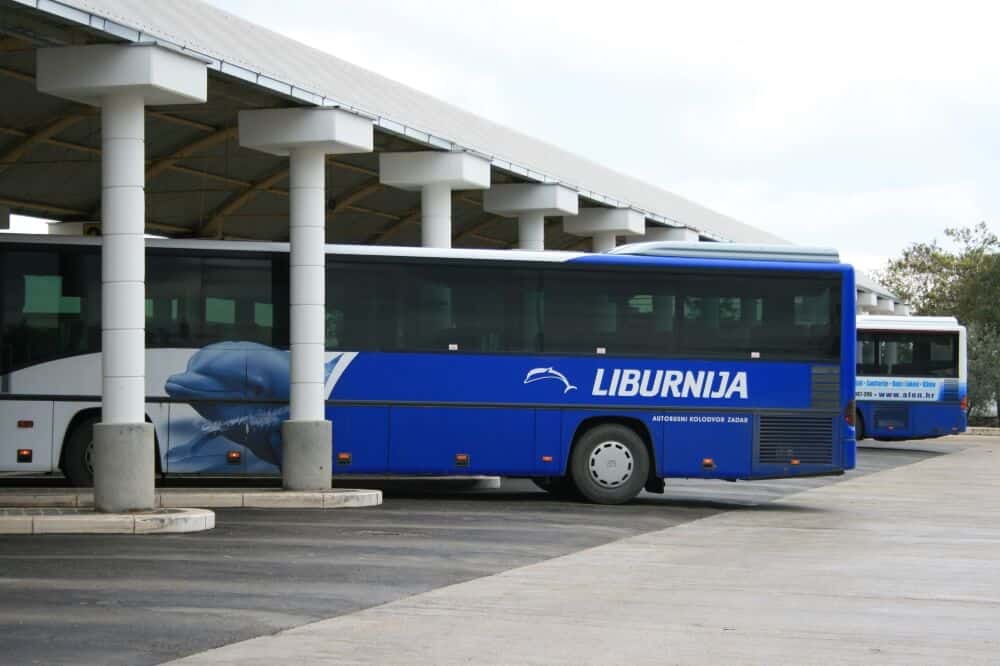
Certainly, you’ll find getting to Zadar by bus very easy indeed. Because Zadar lies on a major motorway, almost every bus heading between north and south Croatia stops here. Thereafter, make sure you plan if you want to reach Starigrad by bus. Because there are only four buses each day from Zadar to Starigrad. What’s more, Zadar local buses run a reduced service on weekends, when all visitors want to travel. If you want to check the bus times, then go to the Zadar LINE SEARCH here and select ‘Suburban transport’.
Furthermore, once you reach Starigrad, there is no public transport from the town to either park entrances. Luckily, it’s only a couple of kilometres walk from Starigrad to the nearest. Although to be fair, there is one more option. If you’re holidaying in Starigrad itself, then you’ll find at least three bicycle rental options in the town. You can easily cycle up from Starigrad to either park entrance.
Nearest airport to Paklenica National Park

At a distance of around 50km, Zadar airport is the nearest to Paklenica. However, there are two more international airports reasonably close to the park. Firstly, at a distance of less than 150km, Split airport is the next nearest. Thereafter, Rijeka airport is the next nearest, at a distance of around 200km. If you want to know more about these airports, then find Zadar here, Split here, Rijeka here.
Road, by car
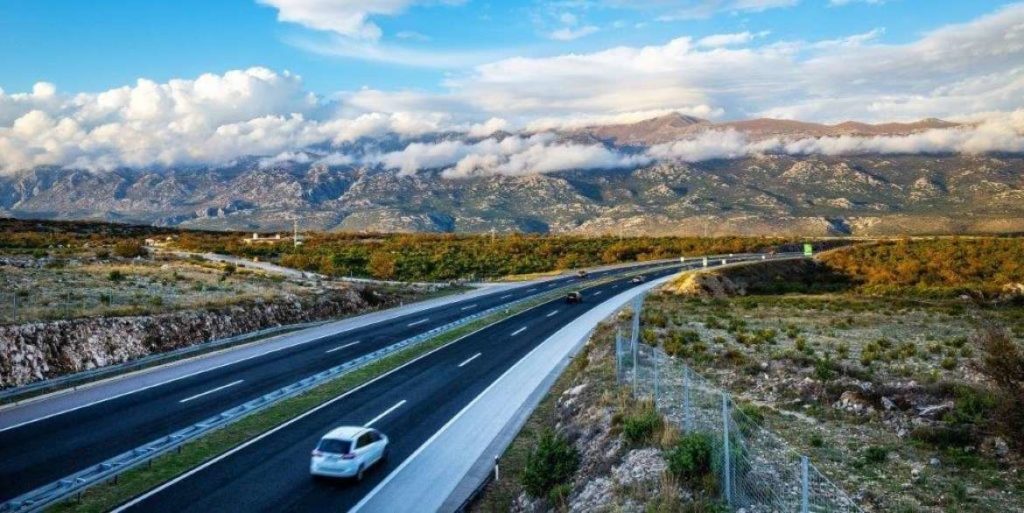
From Zagreb, from Rijeka, from Split
Balanced against some of its inaccessible terrain, Paklenica National Park is actually very easy to reach by car. In fact, the park lies just off Croatia’s largest motorway, the A1, which connects Zagreb to Split. Also, you can take this motorway if you want to travel from Rijeka to Paklenica. Although, from Rijeka, the coastal road is more scenic, has no tolls and doesn’t take much longer.
If you’re driving from Split, then again you have several options. In this case, the scenic route or the D27 are going to add at least 40 minutes to your drive. Without a doubt, your quickest option is to take the A1. Both drivers from north and south should depart the A1 following signs for Starigrad.
Looking for a fast, reliable and trouble-free transfer to or from Paklenica? Contact TC transfer partner Adriatic Transfers for your one-stop solution.
Drive from Zadar to Paklenica National Park
Take Ulica Nikole Tesle and Ulica Hrvatskog Sabora to Jadranska Magistrala. Thereafter, follow Jadranska Magistrala all the way to Starigrad, then follow signs for the park.
Plan a Safe Visit to Paklenica National Park
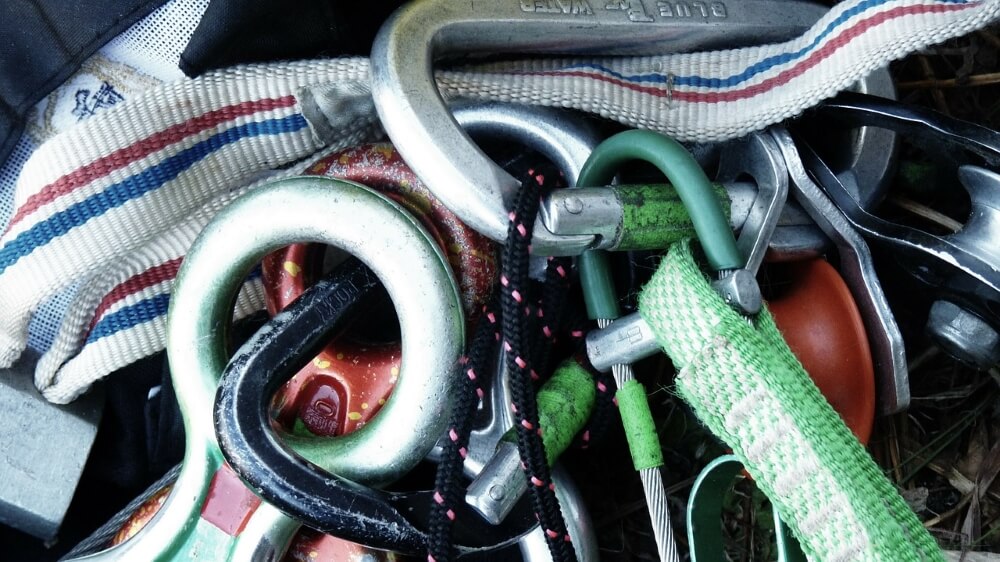
Planning and Precautions for Paklenica National Park
If you’re going hiking in Paklenica, then plan your route before you set off. Tell someone outside your hiking party about the route you plan to take. In fact, it’s a good idea to leave a map of your route at your lodgings. Make sure you have appropriate footwear. Specifically, trainers and sandals are not appropriate for tackling some of the higher mountain areas. Wear boots for strenuous hikes, even in summer. And, make sure you check the weather forecast.
If you’re going climbing in Paklenica, then make sure you can count on your equipment and team members. Climbing alone in Paklenica is strictly forbidden.
Regardless of how long you plan to be in the park, take enough fresh drinking water. Equally important, once you’ve finished, please don’t leave any empty plastic bottles behind. Additionally, take fully charged mobile phones.
Emergency help
If you get into trouble on the mountains, then call emergency services at the earliest opportunity. The emergency phone number for Croatia is 112. Read all you need to know about emergency services in Croatia here.
More information
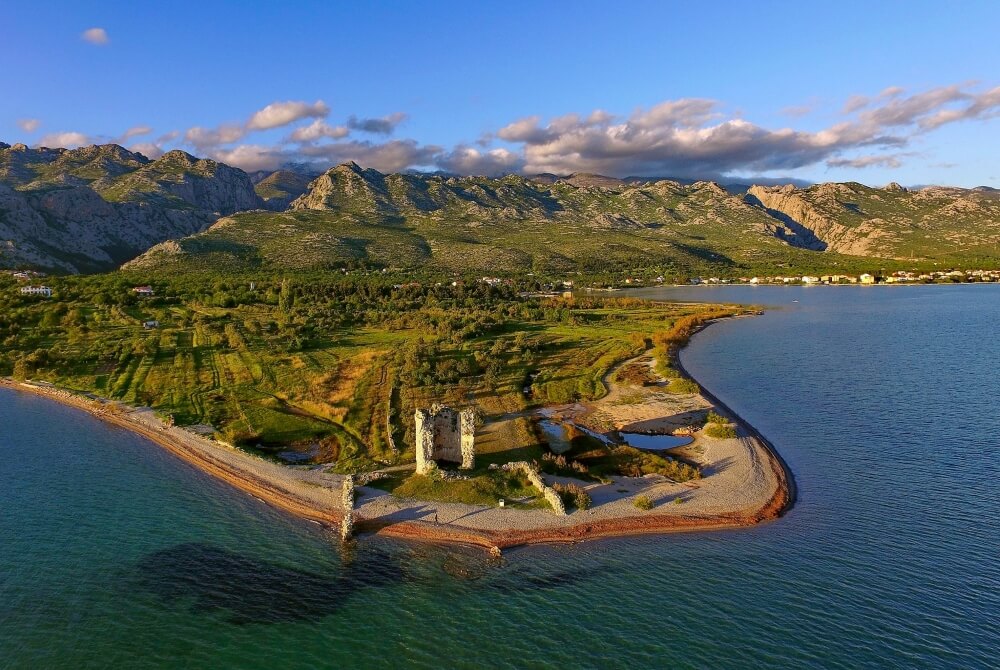
Paklenica National Park
Address: Dr. F. Tuđmana 14a, 23244 Starigrad-Paklenica, Zadar County, Croatia
Email: np-paklenica@paklenica.hr, prezentacija@paklenica.hr (info)
Telephone: +385 (0) 23 369 155, +385 (0) 23 369 202 (Direction and Camp), +385 (0) 23 369 803 (Entrance 1 Velika Paklenica)
Website: np-paklenica.hr/en
Facebook: facebook.com/NPPaklenica/
Starigrad-Paklenica Tourist Board
Address: Trg Tome Marasovića 1, 23244 Starigrad-Paklenica, Zadar County, Croatia
Email: info@rivijera-paklenica.hr
Telephone: +385 (0) 23 369 245
Website: rivijera-paklenica.hr/en
Facebook: facebook.com/rivijera.paklenica
Zadar County Tourist Board
Address: Jurja Barakovića 5, 23000 Zadar, Croatia
Email: info@zadar.hr
Telephone: +385 (0) 23 315 316
Website: zadar.hr/en
Facebook: facebook.com/ZadarRegionCroatia
PD Paklenica (Paklenica Mountaineering Association from Zadar)
Address: Majke Margarite 6, 23000 Zadar, Croatia
Email: planinari.paklenica@gmail.com
Telephone: +385 (0) 23 301 636
Website: pdpaklenica.hr/
Facebook: facebook.com/pd.paklenica/
Both the author and Total Croatia would like to thank the following for their help in compiling this guide: All of the photographers who work was used, in particular, Ivan Čorić; Julije Žigo and PD Paklenica; Jana Mijailović of HGSS Zadar.
If you want the latest news from Paklenica National Park, Starigrad, Zadar and Zadar County, then see Total Croatia News here.

